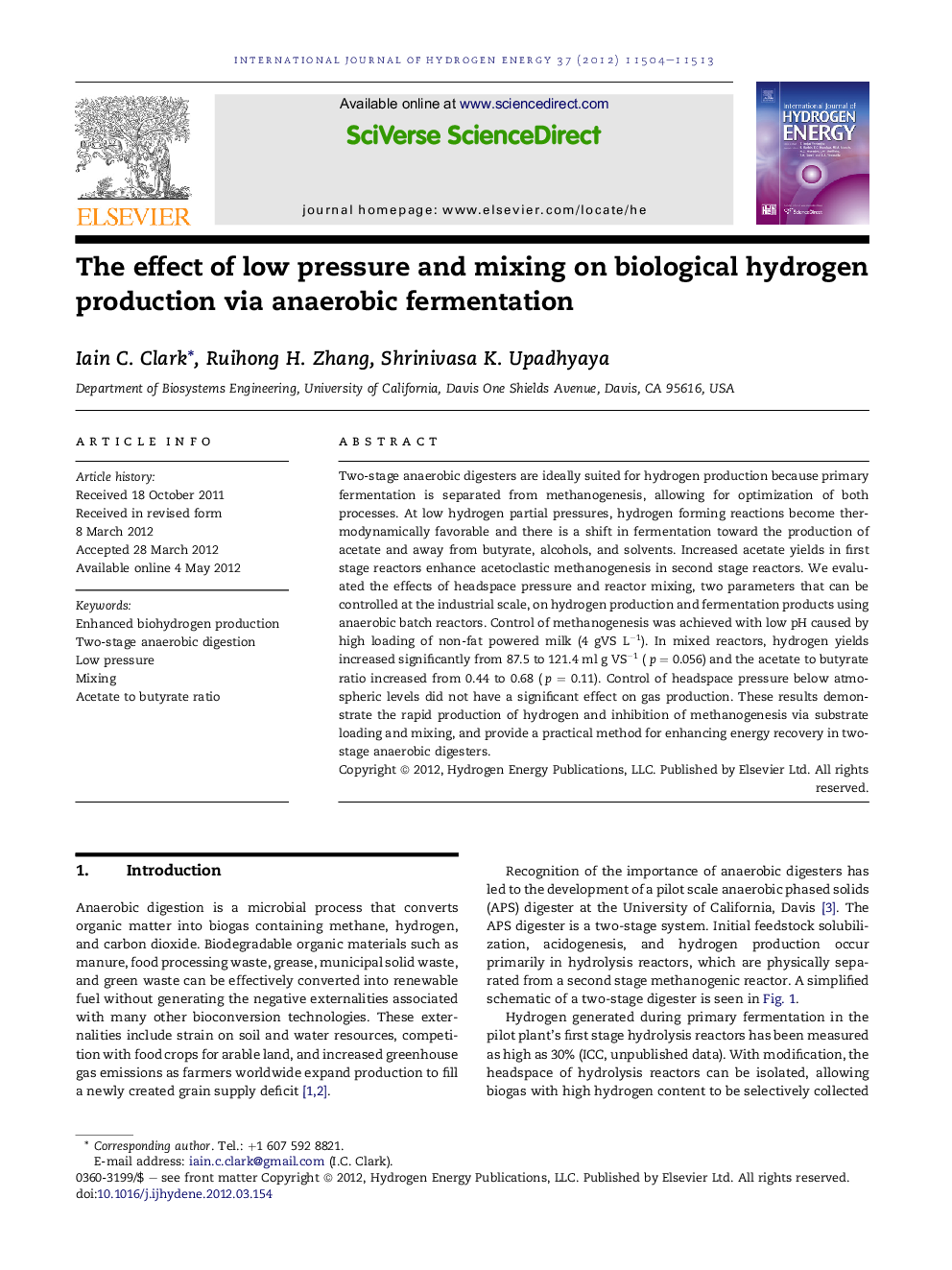| Article ID | Journal | Published Year | Pages | File Type |
|---|---|---|---|---|
| 1276315 | International Journal of Hydrogen Energy | 2012 | 10 Pages |
Two-stage anaerobic digesters are ideally suited for hydrogen production because primary fermentation is separated from methanogenesis, allowing for optimization of both processes. At low hydrogen partial pressures, hydrogen forming reactions become thermodynamically favorable and there is a shift in fermentation toward the production of acetate and away from butyrate, alcohols, and solvents. Increased acetate yields in first stage reactors enhance acetoclastic methanogenesis in second stage reactors. We evaluated the effects of headspace pressure and reactor mixing, two parameters that can be controlled at the industrial scale, on hydrogen production and fermentation products using anaerobic batch reactors. Control of methanogenesis was achieved with low pH caused by high loading of non-fat powered milk (4 gVS L−1L−1). In mixed reactors, hydrogen yields increased significantly from 87.5 to 121.4 ml gVS−1 (p = 0.056) and the acetate to butyrate ratio increased from 0.44 to 0.68 (p = 0.11). Control of headspace pressure below atmospheric levels did not have a significant effect on gas production. These results demonstrate the rapid production of hydrogen and inhibition of methanogenesis via substrate loading and mixing, and provide a practical method for enhancing energy recovery in two-stage anaerobic digesters.
► We evaluate methods for increasing hydrogen production in anaerobic digesters. ► Anaerobic fermentation using high substrate loading produces H2 rich biogas. ► Mixing increases hydrogen by releasing entrained gas and preventing methanogenesis. ► Acetate/butyrate increases in mixed reactors, suggesting a fermentation shift. ► Increased acetate improves methane production in downstream methanogenic reactors.
